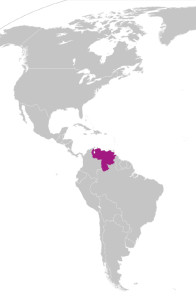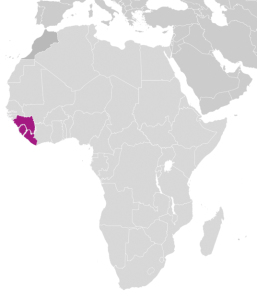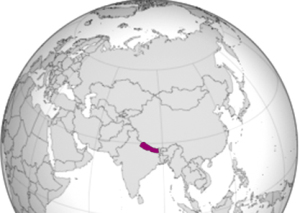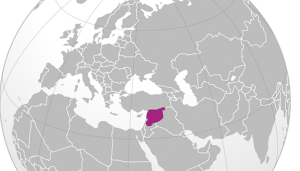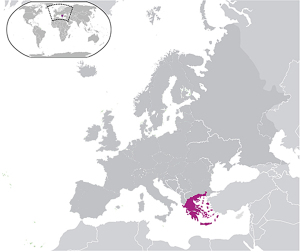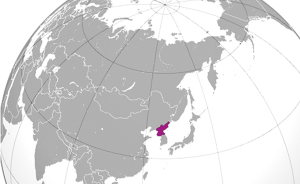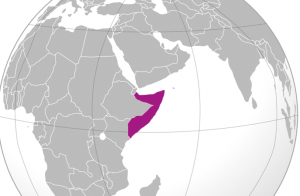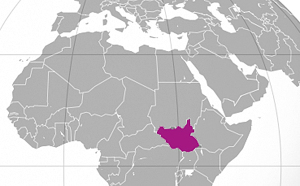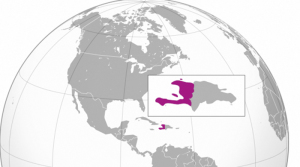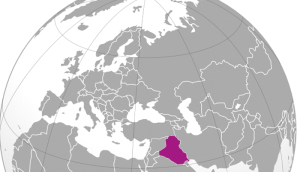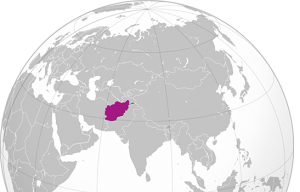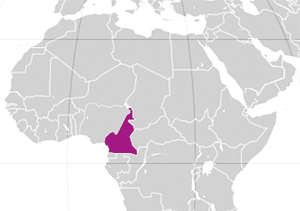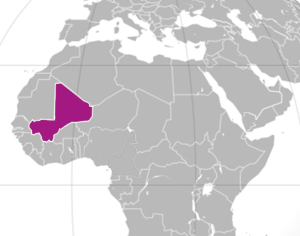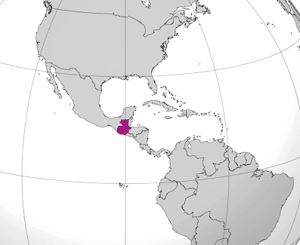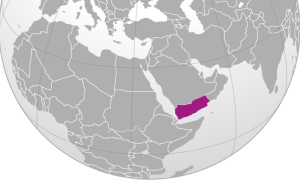Where Are People Hungry?
Liberia, Guinea & Sierra Leone
Nepal
Syria
Greece
North Korea
Horn of Africa
South Sudan
Haiti
Iraq
Afghanistan
Cameroon
Mali
Guatemala
Yemen
Where Are People Hungry?
An Introduction
by Katie Cook
From Millennium Development to Sustainable Development
Before 2008, the “anti-hunger” community saw some progress toward ending hunger in the world, although it seemed slow to many of us. The number of people who died each day from hunger had shrunk from a reported 38,000 in the mid-1980s to 25,000 (depending on whom you asked and what criteria they used).
A United Nations summit in the year 2000 had chosen eight Millennium Development Goals—aims for cutting global poverty in half by 2015 (see below for a list of the MDGs). Some gains had been made toward the eight goals, which included eradicating extreme poverty, providing education for everyone in the world, empowering women, reducing child mortality, and combating HIV/AIDS, malaria and other diseases.
But the petroleum crisis of 2008, brought on largely by the war in Iraq, caused food prices to skyrocket. The ensuing crisis set the anti-hunger movement back a decade or more. The global recession was exacerbated by floods, hurricanes, earthquakes and extended droughts across the globe. During that year, riots broke out in a number of countries where the scarcity of food grew and the prices of food spiked.
Although fewer people died from hunger-related causes in the ensuing years, more people were at risk for food insecurity and undernourishment. In 2009, the UN’s Intergovernmental Panel on Climate Change (IPCC) predicted that global climate change alone could increase the number of undernourished people by between 40 million and 170 million.
In 2010, UN Secretary-General Ban Ki-moon called on world leaders to attend a September summit in New York, NY, in hopes of accelerating progress toward the Millennium Development Goals. In June 2013, the UN Food and Agriculture Organisation (FAO) announced that 38 countries had met the MDGs, and that 18 of them had also met a more stringent World Food Summit goal of reducing by half the number of undernourished people.
It is now 2015, and the UN Development Programme (UNDP) is declaring this year a “once-in-a-generation opportunity” for sustainable development. In September, UN member nations will meet to decide on new Sustainable Development Goals (SDGs), which will guide global development priorities for the next 15 years.
Who’s Hungry in the World?
The UN Food and Agriculture Organisation reported in 2011 that 65 percent of the world’s hungry people live in only seven countries: India, China, the Democratic Republic of Congo, Bangladesh, Indonesia, Pakistan and Ethiopia. The World Food Programme lists the following 13 countries as having the highest rate of undernourished people (35 percent or more of the population): Angola, Botswana, Burundi, Central African Republic, Chad, Democratic Republic of Congo, Eritrea, Ethiopia, Haiti, Malawi, Mozambique, Sierra Leone and Zambia.
Twenty-two other countries were listed with 20 to 34 percent of their people undernourished and at “moderately high” risk of food insecurity. Several regions of Somalia, in the Horn of Afica, were recently designated by the UN as official famine areas.
Several countries—Africa’s Western Sahara, Libya, Sudan, South Sudan, the Democratic Republic of Congo, Eritrea and Somalia, along with Syria, Bhutan and Papua New Guinea—were in such turmoil that the WFP didn’t have enough data to rate them. (Some of these countries may have shifted into the “very high” category since the WFP published its report, and some may have improved conditions Go to this link to see the WFP’s latest hunger map.)
In 2009, almost a billion people went to bed hungry every night. The current number, according to the WFP, is 795 million. Although this, of course, is heart-breaking and unacceptable, it shows that those who work so hard to end hunger have made steady progress.
On this page, we will take an all-too-quick look at some of those high-risk countries. (Watch here and in future issues of Hunger News & Hope for more profiles.) After reading these reports, we suggest that you get in contact with your denomination’s or faith community’s hunger response program and find out how you can help them respond to these and other food-insecure regions. If you need help in contacting your denomination’s hunger program or finding a program to support, please feel free to call us at 254-755-7745 or email seedseditor1@gmail.com.
—Katie Cook is the Seeds of Hope editor. Sources: UNDP Newsroom, Africa Renewal and Hunger News & Hope (HNH). See “Who’s Hungry in the World?” in HNH Vol. 12 No 1, Summer 2011. For more information about the Millennium Development Goals, see “Millennium Development Goals: How Far Have We Come in Eight Years?” “The US Responds to Millennium Goals” and “Praying Toward the Millenium Development Goals,” HNH, Vol 9 No 4, Spring 2008; “Special Section: UN Summit to Accelerate Progress on Millenium Development Goals,” HNH, Vol 11 No 2, Summer 2010; “UN Summit Pushes toward 2015 Goals,” HNH, Vol 11 No 3, Fall 2010. For more information about preparation for the September Sustainable Development Goals summit, go to this link.
The Millennium Development Goals
1. Eradicate extreme poverty and hunger
2. Achieve universal primary education
3. Promote gender equality and empower women
4. Reduce child mortality
5. Improve maternal health
6. Combat HIV/AIDS, malaria, and other diseases
7. Ensure environmental sustainability
8. Develop a global partnership for development
—For more information about the MDGs, go to www.un.org/millenniumgoals or go to the Hunger News & Hope page of this website and look for the Special Section on MDGs in Vol 11 No 2, Summer 2010, pp 5-8, and Vol 11 No 3, Fall 2010, page 1.
Venezuela:
Decline in Exported Oil, Drought and Government Shutdown Cause Hunger
by LeAnne Kerr
Market predictions from last August have Venezuelans in a tight bind. Last summer, an infuriated mob looted and set fire to a National Guard post due to outrage stemming from ongoing food shortages. These attacks were inevitable reactions to long lines at supermarkets, suspicions about market prices and an ultimate sense of desperation among the people. The Venezuela Observatory of Social Conflict recorded 500 protests over food shortages and 56 looting incidents in the first half of 2015 alone. Incidents of looting, black market sales, smuggling and social resistance to the government are on the rise again in 2016.
Last year, Venezuelan government officials targeted smugglers for looting supermarkets and grocery stores. The government is regarding this act of taking stolen goods across the border as “treason.” The Wall Street Journal reported that a middle-aged man and his two friends were beaten by Venezuela’s military because they were accused of smuggling.
Since then, the situation has only worsened. A vicious drought settled in the country in the first part of 2016, exacerbating the economic, social and political disasters. The country is rationing energy; 70 percent of the energy now comes from the Guri Dam in Bolivar State. In April, the government announced that more than 2.5 million public sector employees were to work only two days a week to conserve daytime electricity. This summer, protesters are blaming Venezuelan President Nicolás Maduro for the country’s decline.
When oil, the main export of Venezuela, has a lowering price, it worsens the economic crisis. Drought conditions control whether the country generates hydroelectric power or not. The drinking water is contaminated, making the people sick and unable to maintain proper hygiene for healthy living. Above all, people are becoming more and more poor, and desperately hungry. Food smugglers are being pursued and prosecuted for selling stolen food at a higher price than the price that is set by the government. The set price for food is now lower than the cost of producing the food.
With 10 lootings per day, food riots continuing, protests at every turn, power outages, lack of food and lack of water, Venezuela is scrambling to make it out of this turmoil. Consider this country in your prayers as they are in desperate need of God’s faithful hand.
– At this writing, LeAnne Kerr was a Professional Writing major at Baylor University and the interning Editorial Assistant for Seeds of Hope Publishers. Sources: The New York Times, The Wall Street Journal, CBC News.
Liberia, Guinea and Sierra Leone:
Hunger and Devastation in Ebola-stricken West Africa
by Grayson Wolf
The Ebola crisis in West Africa has garnered headlines since December 2013 without undue cause. The most recent outbreak is the worst ever recorded for the Ebola virus. In fact, it has killed more people than all previous Ebola outbreaks combined. Displacing countless lives in Guinea, Liberia and Sierra Leone, this epidemic seized the world’s attention. Often lost, however, in the hysteria surrounding a possible pandemic, were the frightening implications of Ebola and food insecurity.
The data about the Ebola crisis is absolutely stunning. As of the most recent World Health Organization situation report, there have been 27,049 documented cases of Ebola, resulting in 11,149 confirmed deaths. This total is widely expected to be higher than recorded.
The epidemic was at its height from August 2014 to October 2014. Thankfully, Liberia was declared Ebola-free in May 2015, after 42 days with no new cases. Even so, new cases are cropping up each week in Sierra Leone and Guinea.
Disaster relief poured into West Africa, sometimes to the detriment of relief workers, some of whom contracted the disease. Doctors Without Borders alone treated nearly 10,000 people, losing 14 of its own staff to Ebola. Many other organizations provided healthcare and vital resources to the disease-ridden countries. These relief efforts were duly well publicized.
Unfortunately, news outlets frequently overlooked the importance of food assistance when reporting the Ebola disaster relief. The World Food Programme has fed 2.8 million people affected by Ebola since April 2014. In doing so, they coordinated the distribution of over 66,000 metric tons of food. Despite this tremendous effort, 1.7 million people still lack reliable access to food in the region, of which at least 200,000 are food-insecure directly because of Ebola.
Ebola attacks food security in multiple ways, but none more apparent than Ebola’s propensity to devastate family units. Ebola is transmitted by contact with the body fluids of an infected person. Accordingly, Ebola has spread most easily within families, jumping from one family member to the next. In this manner, the main providers and caregivers of the family are stricken, leaving behind widows, orphans and otherwise vulnerable family members.
Ebola also disrupted the national economies—another factor in amplifying food insecurity in West Africa. Because of the crisis, many countries closed their borders to Liberia, Guinea and Sierra Leone. The decrease in imports caused the price of many basic food sources to increase dramatically. Furthermore, the epidemic upset trade and food markets within the respective countries, which also contributes to food scarcity and higher prices. Consequently, the already destitute, Ebola-ridden populations face severe food shortages.
It appears that food insecurity appears will be a lasting element in West Africa, notably due to the effect of Ebola on agriculture. The World Bank estimates that “the three countries will lose at least US$1.6 billion in forgone economic growth in 2015 as a result of the epidemic.” Since these countries rely on agriculture, production is expected to drop considerably for 2015.
The fight against Ebola is still in progress, and its devastation will most assuredly outlast the outbreak. You can show support for West Africa by staying updated on Ebola news, helping fund relief efforts, and keeping the stricken countries in your thoughts and prayers.
—At this writing, Grayson Wolf was a religion and English major at Baylor University and a Professional Writing intern Seeds of Hope Publishers. He grew up in Waco, TX. Sources: BBC, Centers for Disease Control and Prevention , Doctors Without Borders, Food and Agriculture Organization, International SOS, IRIN News, UN World Food Programme, World Bank, World Health Organization.
Earthquake Leaves Nepal in Tatters
by Grayson Wolf
Nepal’s worst natural disaster in 80 years has left millions in need of aid. On April 25, 2014, a 7.8 magnitude earthquake struck Nepal’s Western and Central Regions. A second earthquake occurred on May 12, 2015, this time registering a magnitude of 7.3.
More than 8,000 people have been confirmed dead, and thousands more were injured. Many of those who weren’t injured are now displaced. The earthquakes destroyed or damaged more than 750,000 homes, thereby putting 2.8 million people in need of shelter. The Nepalese government estimates 3.5 million of its citizens will require immediate food assistance.
Many global organizations are rallying to provide aid for Nepal. Groups such as the UN World Food Programme and the ACT Alliance have assisted more than 250,000 Nepalese by providing food, shelter, and other necessities. Unfortunately, disaster relief in Nepal has been an arduous affair.
Responders face numerous difficulties in accessing those who need help. They face external impediments such as poor infrastructure, treacherous terrain and a looming monsoon season. Furthermore, humanitarian agencies desperately need funding.
“We’ve achieved a lot already but we must do much more. That’s why we’re bringing in more trucks and helicopters and working together with more partners to get help where it’s needed—not just food, but shelter too,” said World Food Programme Executive Director Ertharin Cousin. “An operation of this scope and complexity requires more financial support to see this through.”
Nepal is not unfamiliar with food insecurity. It is one of the poorest countries in the world. Consequently, its people are among the most malnourished. The World Bank ranks Nepal 157th out of 187 in human development and reports that 47 percent of Nepalese children under age 5 are stunted.
Moreover, the World Bank estimates malnutrition in Nepal results in a two-to-three percent loss in Gross National Product. Thus, Nepal is stuck in a downward spiral of poverty and food insecurity. The country’s economic condition, combined with concerns about the earthquakes’ effect on agriculture mean that Nepal is likely facing an enduring problem in food insecurity.
As with all food security problems, relief first requires awareness. In light of Nepal’s ongoing troubles, let’s not forget about their hungry people when the disaster has faded from the public view. One excellent resource provided by Church World Service is a hymn-prayer written by Carolyn Winfrey Gillette for Nepal. If your group wishes to use this hymn as an awareness tool, go to this link.
—At this writing, Grayson Wolf was a religion and English major at Baylor University and a Professional Writing intern Seeds of Hope Publishers. He grew up in Waco, TX. Sources: ACT Alliance, Care International, Church World Service, UN World Food Programme, World Bank.
Civil Conflict and Drought Plague Syria
by Stormy Campbell
In March 2011, political tensions in Syria exploded into violent civil conflict that continues to devastate the nation’s economy and citizens at this writing. Protests against Syrian ruler President Bashar al-Assad have been answered with ever-escalating violence for almost two years. Forces loyal to the president and rebel forces have been battling each other, often with Syrian civilians caught in the middle.
The conflict has permeated the lives of each citizen, leading to difficulties in attaining food and even getting to work. Both food and fuel prices have risen rapidly and steadily throughout the nation.
The country has also suffered a drought, which has devastated crops and livestock, crippli
ng the agricultural sector of the economy. Syria, once a net exporter of wheat, in recent years has become a net importer. The agricultural sector lost US$1.8 billion this year, with most of the loss being attributed to the conflict.
The drought, along with the political crisis, has led to high unemployment rates. Syria’s economy was already declining drastically in the months leading up to March 2011; after the conflict began, unemployment reached frightening heights. Government estimates place the unemployment rate at between 30 and 45 percent.
A Joint Rapid Food Security Needs Assessment was conducted in June 2012 by the United Nations (UN) and Syria’s Ministry of Agriculture and Agrarian Reform. The findings showed that the drought, combined with the fighting, had caused significant damage to the agricultural economy, had ruined strategic crops, and created an alarming amount of deforestation. The report also found that about a third of the rural population needed immediate assistance, with around 10 percent of those farmers being female-headed households.
As the bloodshed in Syria persists and economic conditions continue to disintegrate, hundreds of thousands of Syrians have fled to Turkey, Lebanon, Jordan and Iraq. According to a UN refugee agency, 102,000 Syrians fled in the in August 2012 alone, up from 85,000 in June.
Officials from the World Food Programme predict that some 1.5 million people will be in urgent need of food assistance within the next six months.
Jordan and Turkey hold the highest number of Syrian refugees, somewhere between 75,000 and 85,000 each. While international aid agencies have responded quickly, they have found it difficult to keep up with the needs of the increasing number of refugees.
Three million Syrians who have remained in the country will be in need of food, crop and livestock assistance in the next year. In areas of where armed conflict has become common, the ability to meet basic needs, such as food, water, medical supplies and electricity, has decreased dramatically.
Many of the families who have remained behind are being forced to cut the number of meals they eat daily, eat lower-nutrition food, withdraw children from school and cut back—or cut out—medical and educational expenses. It is estimated that approximately 20,000 people have died since the protest began in March 2011.
—At this writing, Stormy Campbell, a native of Yoakum, in the Texas coastal region, was a Professional Writing student at Baylor University and a Seeds of Hope intern. Sources: United Nations World Food Programme, BBC News, US State Department, New York Times. This article was printed in Hunger News & Hope, Vol. 13 No. 1, Winter 2013.
Five-Year Recession Throws Many Greeks into Poverty
by Stormy Campbell
While all of the European Union has felt the effects of the European financial crisis, it may be that Greece has suffered the most. The homeless population in Greece has soared in the last two years, rising 25 percent between 2009 and 2011, and 27 percent of the country is currently classified as either living in poverty or being at severe risk of poverty.
The economic condition of Greece has steadily declined over the past five years. Greece’s national spending problem can be traced back to a time before the country joined the European Union. However, after joining the European Union and the adoption of the euro, public spending in the country soared even higher than before. Within eight years, public wages had increased by 50 percent.
Public spending was increasing and wages for citizens were rapidly rising. Greece became unable to support itself. The country also faced widespread tax evasion, a practice commonly accepted in Greece. Estimates put the amount of money Greece annually loses through tax evasions between US$14 billion and US$30 billion.
Even at the most modest estimate, the money owed in taxes could potentially finance a large portion of the nation’s debt, but the Greek government has had difficulty collecting the money.
Between the swift rise of wages and the lack of public money, the country soon spiraled into massive debts. Greece found itself unable to repay its loans, and was forced to seek help from the International Monetary Fund and the rest of the European Union. Under the bailout agreement between Greece and the rest of the European Union, the country needed to show it could cut €11.5 billion in spending within two years, causing crises in businesses throughout the country.
These conditions have forced Greece into a five-year recession, causing many businesses to lay off employees and lower salaries, leading to an unemployment rate of 20 percent. Many Greek citizens have lost their jobs, depleting their savings accounts paying for basic needs before they were able to find new employment.
These citizens, so affected by the recession, have been labeled as a class of “new homeless.” Soup kitchens are serving double the number of meals they did two years ago, and several hostels, particularly in Athens, have filled their beds with these new homeless people. In 2009, the average age of regular guests at the soup kitchens in Athens was 60 years. As of 2012, that age is now 47 years.
This shift in age indicates how severely Greece’s economic state is affecting its citizens. The new homeless are often well-educated and formerly held respected jobs that allowed them to afford housing, transportation and basic living needs. After the economic crises hit, many of them lost their jobs, as employers could not afford their salaries. Unable to find new work, these citizens were left with nothing.
Greece does not officially recognize the homeless population as a social group that needs assistance. Therefore, no government-supported homeless shelters exist. All shelters, soup kitchens and other agencies seeking to provide resources are independently run and operate without government support.
—At this writing, Stormy Campbell, a native of Yoakum, in the Texas coastal region, was a Professional Writing student at Baylor University and a Seeds of Hope intern. Sources: New York Times, BBC World News, Athens News, The Guardian, The Wall Street Journal. This article was printed in Hunger News & Hope, Vol. 12 No. 4, Summer 2013.
North Korea: Food Supplies Go from Bad to Worse
by Stormy Campbell
The Democratic People’s Republic of Korea, more commonly known as North Korea, is a country known for its closed and secretive state, its harsh ruling dynasty, and perpetual turmoil. A recent change of ruling, resulting from Kim Jong-il’s death in late 2011, led to Kim Jong-un’s rising as the leader of the nation. Under its new leader, North Korea may face changes.
While Kim Jong-un speaks of economic reform to repair a broken economy, rice prices have risen, making the grain—the main staple food for the country—unattainable for many. Some of the country’s citizens who could afford to do so seized the opportunity to gain a profit while publicly talking of reform, and started hoarding rice, leading to a decrease in the amount of food available to the general public. The price of a month’s supply of rice is thought to be around one month’s salary.
Even without rising costs, the food situation in North Korea seems grim. A long-term problem has been keeping crop production high enough to feed the population, as the mountainous regions of the country force agriculture to be confined to a small area of the country. Only 20 percent of the land in North Korea can be used for agriculture. The country also is also situated in a climate prone to natural disasters, causing food production to be even more challenging.
In May of 2012, North Korea faced the possibility of a severe drought, which would wither the crops and lead to another shortage in food supplies. Just two months later, in July, the situation had shifted completely, as the country faced wide-scale flooding that took out several crops, once again decreasing food supplies.
The small amount of food that is available is often given to government officials and military members as a first priority, leaving the majority of the population severely lacking in resources. Around 16 million North Korean citizens are thought to be chronically food-insecure and dependent upon a public distribution system to have enough food to sustain them on a long-term basis.
As of March 2011, a United Nations survey found that over 6 million people in North Korea were at risk of outright famine without international food assistance. Nongovernmental organizations in South Korea have begun to report deaths from starvation and other hunger-related causes among their neighbors to the north.
North Korea has received the most aid from the United States and South Korea in the past, but both countries have recently withdrawn their agreements to supply food because the North Korean government has taken actions that have been interpreted as being in direct conflict with the terms of the food deals. This has worsened an already bad situation.
—At this writing, Stormy Campbell, a native of Yoakum, in the Texas coastal region, was a Professional Writing student at Baylor University and a Seeds of Hope intern. Sources: Human Rights Watch, BBC World News, New York Times, United Nations 2012 Report. This article was printed in Hunger News & Hope, Vol. 12 No. 4, Summer 2013.
Famine in the Horn of Africa
by Katie Cook
A few days before press time (in the summer of 2011), the United Nations declared that Somalia’s food crisis had become a famine in several parts of the country.
Somalia has lurched from crisis to crisis since 1991, when the central government imploded. In 1992, a similar combination of drought and war set off a famine that killed hundreds of thousands of people and started a cycle of international intervention that, despite billions of dollars and more than a dozen transitional governments, has yet to stabilize the country.
Now, some 11 to 12 million people struggle to survive the driest period in the Eastern Horn of Africa in 60 years. The drought caused widespread crop failure, devastating livestock and causing substantial increases in food prices. In hard-hit Somalia alone, some 3.7 million people face a crisis, and hundreds of thousands are pouring into other countries, including Ethiopia, Kenya and Djibouti.
The UN says that tens of thousands of Somalis died of malnutrition-related causes in the first few months of 2011.
The UN defines famine as occurring when “acute malnutrition rates among children exceed 30 percent, more than two people per 10,000 die per day and people are not able to access food and other basic necessities.”
Those conditions have been met in southern Somalia, in Bakool and Lower Shabelee, both controlled by Islamic militants known as the Shabab. But people ran out of food throughout the country, and other regions were added to the “famine” category just before press time. According to American officials in the region, more than 10 million people continue to need emergency rations to survive in the wider Horn of Africa—which includes Kenya, Ethiopia, Sudan and Eritrea. South Sudan, an emerging new country, and Djibouti are also affected by the drought and food crisis, as well as parts of Uganda. Many of these people are also at risk for cholera and measles.
Aid deliveries from the UN and other sources were discontinued in 2009, because of violence from the Shabab, which is considered a terrorist group by Western nations. Some Somalis reported that Islamic militants were still being violent against those who “had food from the infidels.”
A European Union aid spokesperson said, in late July 2011, that deliveries of food were still complicated by the presence of the Shabab, some supplies are now getting through to the affected regions. A Somali aid worker told the BBC in early August that international organizations were handing food over to Somali agencies, and this seemed to be working well.
In late July, the WFP began sending airlifts with 80 tons of nutritional supplies into the capital city of Mogadishu. Lutheran World Relief, CARE and Church World Service, along with the WFP and a number of other aid agencies, have been recently been concentrating on bringing help to the huge refugee camps in Dadaab, Kenya.
—Katie Cook is the Seeds of Hope editor. Sources: New York Times, Baptist World Aid, BBC World News, The Independent, Bread for the World. This article was printed in Hunger News & Hope, Vol. 12 No. 1, Summer 2011.
South Sudan: Challenges for the World’s Newest Nation
by Katie Cook
The Republic of South Sudan became the world’s newest country in the summer of 2011. In January of this year, the 8 million people of southern Sudan voted overwhelmingly for independence, and, in July, South Sudan became an independent state, with membership in the United Nations and the African Union.
The new country faces enormous challenges, including one of the worst health situations in the world.
Sudan’s most recent civil war, a brutal one that earned charges of genocide from the international community, began in 1983 and officially ended in 2005, when a peace agreement was signed between the northern and southern regions. The referendum this January was a result of that agreement.
Some 1.5 million people died in what is referred to as the Second Sudanese Civil War, and the Sudan People’s Liberation Army/Movement (SPLA/M) is cited for vicious human rights violations and hundreds of atrocities during that conflict.
These civil wars destroyed what little infrastructure there was in the South and contributed to what the humanitarian agency Doctors Without Borders/Médecins Sans Frontières (MSF) terms as the region’s “appalling health indicators.” An estimated 75 percent of people in the new nation have no access to basic medical care. One in seven women dies in childbirth. Malnutrition and disease outbreaks are constant concerns.
While the elections in January were conducted in relative peace, sporadic fighting erupted in late February and March in the Upper Nile and Jonglei states, as well as in the disputed oil-rich border district of Abyei. MSF reports that its hospital staffs treated scores of gunshot wounds during the last few months. Its clinics have also treated tens of thousands of people for severe malnutrition. MSF reports a 20-percent increase from two years ago, and a 50-percent increase from 2008.
Almost 200,000 more people have been forced from their homes since February. Another 300,000 have returned to the south from homes outside the region. This is placing an enormous strain on the country’s already limited supplies of food and water, as well as shelter.
South Sudan’s people are also experiencing a large outbreak of kala azar, a deadly disease spread by the bite of the tsetse fly.
—Katie Cook is the Seeds of Hope editor. Sources: Doctors Without Borders/Médecins Sans Frontières, BBC News, Al Jazeera English, Sudan Tribune, Associated Press. Note: MSF has been working in Sudan since 1978. The agency employs more than 2,000 Sudanese staff, along with almost 200 international staff in 13 projects throughout North and South Sudan. This article was printed in Hunger News & Hope, Vol. 12 No. 1, Summer 2011.
Haiti: A Long History of Poverty
by Katie Cook
In January 2010, catastrophic earthquakes tore apart the tiny Caribbean country of Haiti, which was already choked by centuries of poverty and oppression. Before the 2010 earthquakes, 75 percent of Haiti’s 9 million people, according to UN figures, survived on less than $2 a day. About a third of the Haitian population was considered to be food-insecure.
The Republic of Haiti is located on the western third of the island of Hispaniola, in the Greater Antillean archipelago, and shares the island with the Dominican Republic. Haiti is the poorest country in the Western Hemisphere. According to the UN World Food Programme, more than 35 percent of its population is undernourished.
In the 18th century, Haiti was called the “Jewel of the Antilles,” the richest colony in the world. This wealth, however, was based on a particularly harsh system of slavery. Known as the French colony Saint-Domingue, it was described as one of the most “brutally efficient” slave colonies.
The country has been continually wracked by colonialism and indigenous dictatorships. Even after the slave revolt of 1804 brought independence to the nation, slavery and oppression continued—perpetuated by the Haitian elite and a hostile international environment.
Added to the ravages of oppression were earthquakes, tsunamis, hurricanes, mudslides brought on by tropical storms, floods and international embargos. Around 2005-2006, Haiti experienced some economic growth. A US embargo was partially lifted, and the World Bank and International Monetary Fund canceled 80 percent of the country’s debts.
In 2008, however, the global food crisis hit Haiti. Riots broke out as food prices skyrocketed. This turmoil continued until January 2010, when a 7.0 earthquake, with at least 52 aftershocks, hit the island and devastated the capital city of Port-au-Prince. The city crumbled. More than 300,000 people were killed and 1.6 million left homeless, according to the Haitian government.
In October 2010, a cholera epidemic broke out in Haiti, killing more than 900,000 people. Officials speculated that the disease was accidentally introduced into the population by earthquake relief workers.
In 2011, the Haitian people still struggle to rebuild their nation from the rubble. General elections, originally set for January 2010, took place in November of last year, amid some violence between parties. Runoffs for president took place in March, and Michel Martelly was elected. Many humanitarian agencies remain in the country. According to the UN’s World Food Programme, food insecurity in the areas directly affected by the earthquake has dropped in the last year and a half, but levels are still higher than they were prior to 2010.
—Katie Cook is the Seeds of Hope editor. Sources: Oxfam (www.oxfam.org), US Geological Survey, (www.usgs.gov), Global Voices Online (globalvoicesonline.org), New York Times, United Nations World Food Programme. For more about the earthquake, the history of Haiti and resources about Haiti, go to www.seedspublishers.org and find Hunger News & Hope, Vol 11 No 1, Spring 2010, or email seedseditor@clearwire.net for a pdf copy. This article was printed in Hunger News & Hope, Vol. 12 No. 1, Summer 2011.
Slow Reconstruction in Iraq
by Katie Cook
Nearly 30 years of conflict—with Iran in the 1980s and with the US and Coalition forces after 1991—along with UN economic sanctions beginning in the 1990s, have caused severe humanitarian consequences in the Republic of Iraq.
The years of conflict and sanctions were also years of economic decline. The United Nations children’s fund, UNICEF, reported in 1999 that the sanctions had caused the mortality rate of children in Iraq to double.
Since 2004, the Iraqi provisional government, with help from the international community, began to rebuild its infrastructure—including water supply and sewage, electricity production, health care, education, housing and transportation. Last summer, a National Public Radio report said that, despite the fact that Iraq’s economy is driven by oil, the country still only had half the electricity it needed.
A United-Kingdom-based research group reports that security issues, corruption in the government and a lack of coordinated funding have slowed the progress of reconstruction in Iraq. In the first five years after the US invasion, 94 aid workers were killed, 248 injured, 24 arrested or detained, and 89 kidnapped or abducted. (One of those kidnapped and murdered was Margaret Hassan, the director of CARE International in Iraq and an Iraqi citizen since 1972.)
Also during those five years, some 2.4 million people were internally displaced, 2 million fled the country, and 4 million became food-insecure. One-fourth of Iraq’s children were reported in 2008 to be chronically malnourished, and only one-third of them had access to safe drinking water.
According to the UN World Food Programme (WFP), education and health services have continued to deteriorate in Iraq, a situation that severely affects women, children, elderly people and chronically-ill people.
Iraq is now at a crossroads to political stability and socio-economic recovery. Although the food security situation in Iraq is improving, the data from the Iraqi government and the WFP showed 930,000 people in need of food assistance and an additional 6.4 million who were extremely vulnerable and could easily become food-insecure. The survey also showed that female-headed houses and people in rural areas are particularly vulnerable to food insecurity.
In response to these findings, WFP says it is shifting its strategy in Iraq from traditional food aid to innovative food assistance and supporting the government in finding durable solutions to food insecurity.
Katie Cook is the Seeds of Hope editor. Sources: World Food Programme (www.wfp.org), Overseas Development Institute (www.odi.org.uk), National Public Radio (www.npr.org), BBC News (www.bbc.co.uk/news), Care International (www.care.org), The Guardian (www.gaurdian.org.uk), UNICEF (www.unicef.org). This article was printed in Hunger News & Hope, Vol. 12 No. 1, Summer 2011.
War and Drought Perpetuate Hunger in Afghanistan
by Stormy Campbell
Afghanistan’s long history of war and conflict—as well as a drought that distressed the northern provinces during 2011—have led to a large number of food-insecure Afghans. A National Risk and Vulnerability Assessment conducted in Afghanistan found that about a third of the population lacks access to a sufficient amount of food for a healthy life. Overall, 37 percent of Afghans are either currently food-insecure or at-risk for food insecurity.
While billions of dollars in aid money have been poured into Afghanistan in the last decade, the aid has been unequally distributed across the country. While southern Afghanistan-especially in provinces where war and conflict is high-receives the most aid, the northern provinces typically receive little, further contributing to the problems caused by the 2011 drought.
The drought, mainly affecting the northern provinces of Afghanistan, killed several crops completely, while severely damaging others, leading to rising food prices. The price of wheat doubled during this time, and other crops faced a significant price increase.
Fourteen of the country’s 34 provinces were hit by the drought, which caused extreme hardship for the children in the Northern provinces. As families were forced to decrease the size of meals, children often suffered from the sudden decrease in the amount of nutrients they received daily, causing them to be more susceptible to disease. Many schools in the northern provinces have also closed, as children have been forced to enter the workforce to help pay family debts and to help buy food.
From October 2011 until the harvest in May 2012, 2.6 million people in the northern provinces of Afghanistan were food-insecure. Harvest prospects were better, however, because of an early wet season with higher-than-normal precipitation levels. However, while the rain ended the drought and some families have started to recover, many citizens are still suffering from long-term effects of the drought.
Citizens in southern Afghanistan also suffer from hunger-related issues, in spite of the fact that the south receives more international aid than the north. Approximately one-third of the children in the southern provinces are malnourished.
One concern in the south is that, while citizens may not be food-insecure, many are malnourished, because the food available—although it is enough to prevent starvation—lacks many of the essential nutrients they need. Health initiatives that have resulted in some success in most developing countries, such as the addition of iodine to salt in order to ensure healthy brain development, have not been implemented universally in Afghanistan.
Natural disasters also caused problems with food availability throughout the country. Consequently, some 400,000 Afghans are adversely affected by droughts, flood, earthquakes or other extreme weather conditions each year.
—At this writing, Stormy Campbell, a native of Yoakum, in the Texas coastal region, was a Professional Writing student at Baylor University and a Seeds of Hope intern. Sources: United Nations World Food Programme, BBC World News, The Guardian, Save the Children. This article was printed in Hunger News & Hope, Vol. 13 No. 1, Winter 2013.
Poverty and Food Insecurity in Cameroon
compiled by Jessica Foumena
“The world is facing a hunger crisis unlike anything seen in more than 50 years,” the hunger advocacy agency Bread for the World recently posted online. There are 925 million hungry people around the world and 16,000 children die each year from hunger-related causes.
This is one child every five seconds, the agency estimated. In 2005, 1.4 billion people in developing countries lived in extreme poverty, with an income less than $1.25 a day.
Located in Central Africa, Cameroon is home to more than 200 different linguistic groups and enjoys a relatively stable political environment. The nation has distinguished itself from other West African countries through the diversity of its economy, geography and cultures. However, some significant socio-economic disparities, such as persistent rural poverty, remain.
For the past 30 years, 80-year-old Paul Biya has been the Head of State in Cameroon. In a recent online article, BBC News Africa gave an overview of the country’s current political state.
The article reports that several Cameroonian high-profile political figures and one of the president’s doctors have been jailed for sentences as long as 25 years. The article reports that the army, well paid and loyal, has successfully extinguished protests—such as the 2008 food riots. In that same year, Cameroon’s constitution was changed to remove presidential term limits.
The International Fund for Agricultural Development (IFAD) is a specialized agency of the United Nations that enables rural people worldwide to overcome poverty.
According to IFAD, Cameroon’s most recent household survey (ECAM III), undertaken in 2007, revealed that poverty affected an estimated 39.9 percent of the population, compared with 40.2 percent in 2001, and that 55 percent of the country’s poor people live in rural areas.
Other international agencies post similar facts on their respective websites. The World Food Programme (WFP), the food assistance branch for the United Nations, points to Cameroon as one of the eight countries whose populations are threatened by food insecurity throughout the Sahel region.
The Sahel region, the zone skirting the southern portion of the Sahara Desert, is known to be vulnerable to drought and desertification. The other eight countries are Niger, Mauritania, Chad, Mali, Burkina Faso, Senegal and Gambia.
The WFP also states that 40.2 percent of Cameroonians live below the poverty line—that’s one US dollar per day. The number is 52.1 percent in rural areas. Over the last three decades, the North and the Far North regions of Cameroon, located between the Republic of Nigeria and Chad, have been affected by the Sahel drought.
Thus, natural and man-made disasters, paired by a growing impoverishment of the rural population, have contributed to food insecurity and poverty in the North and Far North regions of Cameroon. In an online report, the World Bank reports that poverty in Cameroon has stagnated between 2001 and 2007 at close to 40 percent, with 55 percent of rural households living in poverty, compared to 12 percent of urban households.
IFAD also stated that women and children are particularly hit by poverty in Cameroon; 52 percent of people in poor households are women and half of them are under 15 years of age.
Disparity in access to education is another major issue. The 2007 ECAM III report states that 83.3 percent of boys aged between 5 and 14 attend school, compared to 77.6 percent of girls of the same age; 18 percent of rural women have secondary-level education, and women in the North and Far North regions are the least educated (12 percent and 14 percent, respectively).
Many believe that a strong conservative Islamic influence could be one of the reasons behind the low level of education among Cameroonian women living in those regions. Even though the Cameroonian government has developed programs aimed to improve the lives of women and girls, some cultural ideologies keep the Cameroonian society from fully embracing the importance of female education.
SOS Children’s Village International, an organization that provides homes for children in need, confirms that the groups most affected by poverty in rural areas of Cameroon are women and children.
As a result, the organization reports that nearly one in four children is either moderately or severely underweight; young children often become the breadwinners for an entire family, especially in families that are affected by HIV/AIDS.
International organizations working in Cameroon have implemented programs for numerous disadvantaged groups. The WFP claims to have provided food assistance to malnourished children, pregnant women and mothers of young children.
SOS Children’s Village International has also established several facilities in Cameroon, such as two SOS kindergartens, one SOS youth facility, two SOS medical centers and one SOS social center.
CARE, the Cooperative for Assistance and Relief Everywhere, is an international humanitarian agency whose goal is to help the world’s poorest people find routes out of poverty. CARE has been helping families in the northern part of Cameroon by providing them access to savings and loans accounts.
The money provided helps families to make investments. The organization has also assisted local farmers of the same region in increasing their crop yields through the construction and the improvement of irrigation systems.
Despite the socio-economical challenges they face, Cameroonian women manage to be successful contributors in their society. This is the case with young social entrepreneur Jacqueline Kamsu Souba, who went from simple bead-making to global acclaim.
In a country where young people and women are frustrated by the acute lack of opportunities, the work accomplished by Souba is a true success story. In 2006, she started “Beads of Peace,” a small nonprofit business based in the northwestern Cameroonian city of Bamenda.
According to Voice of America (VOA), an external US broadcast institution, Souba’s breakthrough came after she attended a skills-building seminar for women in 2011. When she created her business, the Beads of Peace Founder and CEO was herself a single mother without a dollar, according to the Pan-African business magazine Ventures Africa.
After collecting different items, such as used plastic bags, old newspapers, outdated calendars and cardboard boxes, Souba recycles them into fashionable and colorful handbags, earrings and necklaces. Her company won the first prize at a national exhibition in Cameroon.
Later, Souba was one of the eight young entrepreneurs from five African countries that attended the 2012 “Mentoring Partnership for Young African Leaders” event. Organized by the US government, the event is a two-week professional development program that aims to give leadership training and mutual exchange to young African leaders in the fields of social and business entrepreneurship. Even though she now runs a separate fashion design business, Souba chose to keep Beads of Peace as a nonprofit to train other single mothers.
—At this writing, Jessica Foumena was finishing a Masters degree in International Journalism at Baylor University and a Seeds of Hope internship. She hails from Cameroon, which is located along the Sahel region in West Africa. For more information about these sources, email Foumena.Jessica@gmail.com. Sources: Bread for The World (www.bread.org); World Bank (www.worldbank.org); World Food Programme (www.wfp.org); International Fund for Agricultural Development (www.ifad.org); CARE (www.careinternational.org.uk); All Africa (www.allafrica.com). This article appeared in Hunger News & Hope, Vol. 13 No. 2, Spring 2013.
War, Drought and Hunger in Mali
compiled by Jessica Foumena
Ongoing turmoil in Mali, a country in West Africa, has recently intensified and come into the global spotlight. During a previous crisis, the international community—led by France and the African-led International Support Mission in Mali (AFISMA)—began to lend their support to the Malian Government. The crisis, caused by rebels associated with Al-Qaeda last December, has worsened the fragile humanitarian situation in West Africa and the Sahel region.
In January 2012, ethnic Tuareg rebels and Islamist militants entered Mali’s northern area and took control of some of the main towns. Located in the heart of the Sahel, Mali is a vast landlocked country of about 15 million people. The Sahel, the zone skirting the southern portion of the Sahara Desert, is known to be vulnerable to drought and desertification.
Even though French is the official language, the country recognizes 13 local languages. Prior to the recent uprising, Mali has enjoyed a steady economic and social progress, paired with a democratic governance. The country was in the final stages of the preparation for democratic elections when the last crisis began.
According to CNN, radical Muslims, in an attempt to impose sharia, the stricter form of Islamic law, have generated fears by compiling a list of unmarried mothers. These groups claim that Islamic law condemns relationships outside marriage. There are reports of rebels physically harming civilians who fail to follow the law, by means of executions, amputations and stoning.
As the members of the group Al Qaeda in the Islamic Maghreb (AQIM) continue to use northern Mali as a safe haven for their operations, Mali faces challenges including food shortages, population displacement and water scarcity.
According to the UN World Food Programme (WFP), more than 200,000 Malians have fled from their homes and the same number have left the country altogether to become refugees in neighboring West African states such as Niger, Mauritania and Burkina Faso.
As of May 2012, a World Bank report stated that more than 17 million people are facing possible starvation in the Sahel. The report explained that the food crisis is the result of a combination of drought caused by poor rainfall in 2011—along with food shortages, high grain prices, environmental damage and large numbers of internally displaced persons.
Responding to the emergency food needs, the WFP has reached out to many Malian families in need. The food sent included cereals, cooking oil, and Plumpy’Sup, a ready-to-use nutrition product aimed at children under the age of five. The organization has partnered with other NGOs to boost nutrition among mothers and children.
At a press briefing held in Geneva, UNHCR (the United Nations refugee agency) spokesperson Melissa Fleming said that the countries of the Sahel region have faced severe drought conditions for years and they are among the poorest in the word. Fleming added that UNHCR only received 60 percent of the US$123.7 million requested for its Mali crisis operations, which take care of food, shelter, clean water, sanitation, health and education. UNHCR and WFP stated on their respective websites that children represent the most vulnerable group.
At this writing, Jessica Foumena was finishing a Masters degree in International Journalism at Baylor University and a Seeds of Hope internship. She hails from Cameroon, which is located along the Sahel region in West Africa. For more information about the sources, email Foumena.Jessica@gmail.com. Sources: United Nations High Commission on Refugees (www.unhrc.org); UN News Centre (www.un.org); World Food Programme (www.wfp.org); World Bank (www.worldbank.org); CNN News (www.cnn.com); US Department of State (http//travel.state.gov); “Food Running Out for Refugees from Mali Conflict,” by Williams Lambers, author of Ending World Hunger (www.blogcritics.org). This article appeared in Hunger News & Hope, Vol. 13 No. 2, Spring 2013.
Climate Change & Food Prices Cause Hunger in Guatemala
compiled by Leslie Reiter
In the past two years, climate change and the global increase in food prices have made a drastic impact on food security in Guatemala. Guatemala has one of the highest levels of chronic malnutrition in Latin America and the fourth-highest rate of malnourishment among children in the world.
The country is especially vulnerable to erratic weather due to its location in an earthquake and hurricane zone. Untimely rains, accompanied by violent storms, are often followed by periods of drought, resulting in the loss of many crops. An Action Against Hunger survey reported that harvests in 2010 were reduced by 60 percent because of climate change.
The East Pacific Corridor, known as the “dry corridor,” and the highlands are the most affected by drought, leaving these areas at high risk for food insecurity. The production of maize and beans, staples on which many of the country’s people rely for sustenance, has been drastically affected by these extended droughts.
Though Guatemala’s 30-year civil war came to an end in 1996, many of its people are still displaced and lack clean water and sanitation systems. Over half of Guatemala’s population live in rural areas and rely on agriculture for both food and income. Poverty is the most prevalent in these rural areas and among the indigenous population.
The way land ownership is structured in Guatemala is also problematic. A small percentage of the country’s population is in control of the majority of its farmland, forcing many small farmers higher into the mountains where there is little cultivatable land. Underdeveloped countries such as Guatemala do not have access to more effective agricultural techniques that could be of assistance to those having to use less arable land.
—Leslie Reiter is a freelance writer in Austin, TX, and a former Seeds of Hope intern. She works with at-risk children in the Austin area and teaches violin. Sources: World Food Programme (www.wfp.org); Hunger Relief International (www.hungerreliefinternational.org); Action Against Hunger (www.actionagainsthunger.org). This article appeared in Hunger News & Hope, Vol. 13 No. 2, Spring 2013.
Who is Starving Yemen?
by Chelle Samaniego
Someone is stealing food in the country of Yemen. But who? Political parties are quick to take sides in this battle for food security in one of the most impoverished nations in the world. Of Yemen’s 29 million citizens, estimates show between 15.9 and 20 million do not have enough food to eat, with 8 million receiving food solely from humanitarian aid.
The United Nations has declared the War in Yemen and resulting famine the worst humanitarian crisis in history.
David Beasley, World Food Programme’s (WFP) executive director, said in a January 2019 article, “At a time when children are dying in Yemen because they haven’t enough food to eat, that is an outrage. This criminal behavior must stop immediately.”
What Started All This?
Officially, Yemen’s Civil War began in 2015, but the conflict goes back years before. In 2011, Yemeni forces overthrew long-standing President Ali Abdullah Saleh when he tried to change their constitution to abolish term limits making himself president for life. With hopes of a peaceful transition, the UN Security Council called on China, France, Russian Federation, the United Kingdom, the United States, Saudi Arabia, Oman, Kuwait, the UAE, and the European Union to oversee what would be called the Gulf Cooperation Council (GCC). Each member of the “Group of Ten” took a role in the restructuring of the country. And, in November 2011, President Saleh agreed to and signed the GCC Initiative transferring power to his vice president, Abd-Rabbu Monsour al-Hadi. This resulted in Saleh having a non-active role until the presidential election – and allowed him to avoid prosecution.
Hadi was then voted into power on February 27, 2012. (He was the only candidate in the election.) Then in 2015, a Houthi-led coalition stormed the capital city of Sana’a, forcing Hadi to escape to Aden and to declare it the temporary capital to this day.
The Houthi movement, founded by Hussein Bader Addian al-Houthi, was originally founded as a theological movement focused on a peaceful educational and cultural vision for the country, until former President Saleh sought to end what he felt was a challenge to his rule in 2004 and sent troops to have Hussein al-Houthi arrested.
Since then, the Houthi regime and the Yemeni government have been at odds. Adding to the fight is Saudi Arabia, which views the Houthis as a group sponsored by Iran and an enemy. Saudi Arabia and the United Arab Emirates openly support Hadi and his role as president in the country.
According to Al Jazeera, Houthi rebels have continuously fired ballistic missiles into Saudi Arabia. This, in turn, caused the Saudi-led coalition to close in on the main port city of Hodeidah on the Red Sea, thus eliminating most imports from entering the country. A recent Reuters report says that, prior to the war, Yemen imported 90 percent of its food, mainly through Hodeidah, where UN inspectors check ships to ensure they do not carry weapons.
This has created a hunger epidemic of famine proportions. To make matters worse, Houthi rebels have seized and stopped supply ships and relief trucks from entering the country’s most food-insecure areas.
Corruption, Fraud and the IPC Scale
The United Nations’ Integrated Food Security Phase Classification (the IPC scale) is our first effort in combating systemic hunger and is a tool used to analyze the immediate need or “phase” a country is in on the hunger scale. Each country is given an Acute Food Insecurity Classification—ranging from Phase 1, which is considered minimal, to Phase 5, which is classified as a famine. They are also given a Chronic Food Insecurity Classification from Level 1 (minimal) to Level 4 (severe).
When broken down, Yemen’s areas are in the most significant stages and are considered in Phases 3 to 5, with areas ranging from Crisis, Emergency and Famine levels. In addition, IPC accounts show that, without humanitarian assistance, these designations could be even higher.
An unnamed spokesperson for WFP noted in an article published in The Guardian,
So far, our monitoring has identified seven food distribution centers which we believe have been engaging in the misappropriation of our food stocks…. Our interviews with beneficiaries entitled to collect food from the seven centers indicated that nearly 60 percent of people had not received the assistance to which they were entitled.
This same official stated, “The reason I don’t believe the IPC figures is because they have been manipulated by political parties. And we have been a party to it. The [food security] surveys have been limited or only done by certain entities.”
Investigations by both the WFP and Associated Press show that these thefts and fraud cases mostly center around Houthi-controlled areas. In fact, the primary food distribution site accused of fraud is associated with the Houthi-led Education Ministry. The United Nations is only one group blaming the Houthi regime for food theft and other atrocities, which the Houthis vehemently deny.
Why Is No One Helping?
Because they simply can’t. Humanitarian groups, aid organizations and even journalists have been prevented from entering the country.
There seems to be a forced shutdown of communication, and those able to communicate (Yemeni activists, journalists, lawyers and civil rights defenders) fear imprisonment, harassment, violence or becoming a name on the ever-increasing list of those who simply disappear.
It is not only Yemeni citizens who are affected. Outside journalists and members of international human rights organizations are restricted from entering areas under Houthi control. Sana’a International Airport has been closed since August 2016. And, with ports and roads blocked by opposing forces, this country—which previously imported almost the entirety of its food and supplies—is in dire need.
Human Rights Watch, a nonprofit organization that “defends the rights of people worldwide,” offers significant information in its World Report 2019: Yemen. The report sheds light on the atrocities performed by both sides since the recent conflict began in 2011. The Yemeni government, Houthi forces, the United Arab Emirates (UAE) and UAE-backed Yemeni forces have detained people—including children—on opposites sides of the war. They have abused detainees, held hostages, raped and tortured refugees and “enforced disappeared” hundreds of people. These are proven, not alleged cases. Aid workers have been kidnapped, detained and murdered.
Where’s the Food Going?
Humanitarian food aid is being seized by opposition forces and is being dispersed in areas among loyal followers. The Houthi regime is being blamed for resources that are being stolen, pillaged and secreted away to combat units. Food intended for relief centers is also blatantly for sale in the open market in the city of Sana’a, Yemen’s constitutional capital. The Associated Press uncovered physical evidence of these actions, although all reports show that the Houthi regime denies it is fault.
In the article “AP Investigation: Food aid stolen as Yemen starves,” Maggie Michael notes, “The World Food Program[me] has 5,000 distribution sites across the country, targeting 10 million people a month with food baskets, but says it can monitor just 20 percent of the deliveries.”
What About the Children?
Armed conflict, hunger and disease are killing the children of Yemen. As many as 85,000 children have died from hunger in the country since 2015. Common vaccinations, such as for diphtheria, and food supplies are being held hostage in conflict zones. Children are dying from diseases and hunger that could easily be prevented.
According to the United Nations, a child dies every 10 minutes in Yemen from preventable causes due to the current conflict. The United Nations Children’s Fund (UNICEF) shows that from March 26, 2015, to December 15, 2018, 2,672 children have been killed in Yemen due to armed conflict. These numbers continue to grow as airstrikes killed between nine and 14 children (reports vary) in the capital of Sana’a as recently as April 9, 2019, when air assaults on a nearby warehouse resulted in damage to two nearby schools. When asked if these schools were near known, active military sites, school officials were not aware of any activity or concerns. This attack by Saudi-led forces follows a strike north of Hodeidah on March 9, 2019, where 12 children were killed.
Who is stealing the food in Yemen? Who is responsible for the 85,000 children that sources that estimate have died since this war began? Currently, 8.4 million Yemenis are deemed “severely food insecure” according to the World Food Programme. Stephen L. Anderson, country director for WFP in Yemen, said in a recent phone interview with The New York Times: “Now, based on analysis and projections, that number [8.4 million] could increase by 50 percent or so. Even if peace were to break out tomorrow, which is very unlikely, we’ve still got a massive humanitarian crisis on our hands.”
According to the IPC website (ipcinfo.org),
Armed conflict remains the main driver of food insecurity in Yemen, curtailing food access for both the displaced and the vulnerable host communities. The food security crisis is further exacerbated by extremely high food prices, the liquidity crisis, disrupted livelihoods and high levels of unemployment.
In fact, most Yemeni have purchased food on credit since the war began, when jobs and employment ceased. Most rely heavily on disbursements from WFP. In spite of this, it seems that, if you can afford the food—or fight for the “right side”—obtaining food does not seem to be a problem in Yemen. As Clive Myrie wrote in a November 2017 BBC article, “Yemen: Finding near-famine—and lots of food,“ “Yemen is cursed by man. Its tragedy isn’t failure in nature, but a failure of politics. It’s experiencing a political famine.”
—Chelle Samaniego is an award-winning freelance writer and social media specialist living in Waco, TX. She is a regular reporter and Social Media editor for Seeds of Hope Publishers. Resources: Arab News, The Guardian, World Food Programme, United Nations Integrated Food Security Phase Classification, New York Times, British Broadcasting Corporation, Associated Press, Al Jazeera, Reuters, United States Peace Institute, Wikipedia.
Author’s note, May 2019:
According to an April 9, 2019 article posted by Al Jazeera, the United States has been assisting Saudi and UAE-led forces in this humanitarian crisis since 2015 when the war began. The country has provided aerial refueling of jets, reconnaissance, and targeting and intelligence information, along with American-made weapons that have discovered in debris. Additionally, “Air raids by the Saudi-UAE coalition have hit civilians, hospitals and water treatment facilities.” At this writing, the US Congress and the Trump administration are entrenched in a dispute over support for the Yemen war. Congress voted to invoke the War Powers Resolution to stop US involvement in the conflict, but this was vetoed by the White House.
Great Britain is assisting as well with its provision of Typhoon military jets along with a “constant supply of ammunition, components, training and technical support required to keep those jets operational,” according to David Wearing, writing for The Guardian. In fact, sources report that if Britain pulled out of this assistance, there would be no jets in the skies, and the war would end in seven to 14 days.
Further sources: Relief Web, WBUR Radio (National Public Radio), Washington Post, NBC News. See especially “Yemen’s Houthis ignoring calls for political solution: Saudi minister” from Reuters. See also “The War in Yemen: Why It Matters” by Ken Sehested, former Seeds editor and member of the Board of Advisors, at prayerandpolitiks.org.

